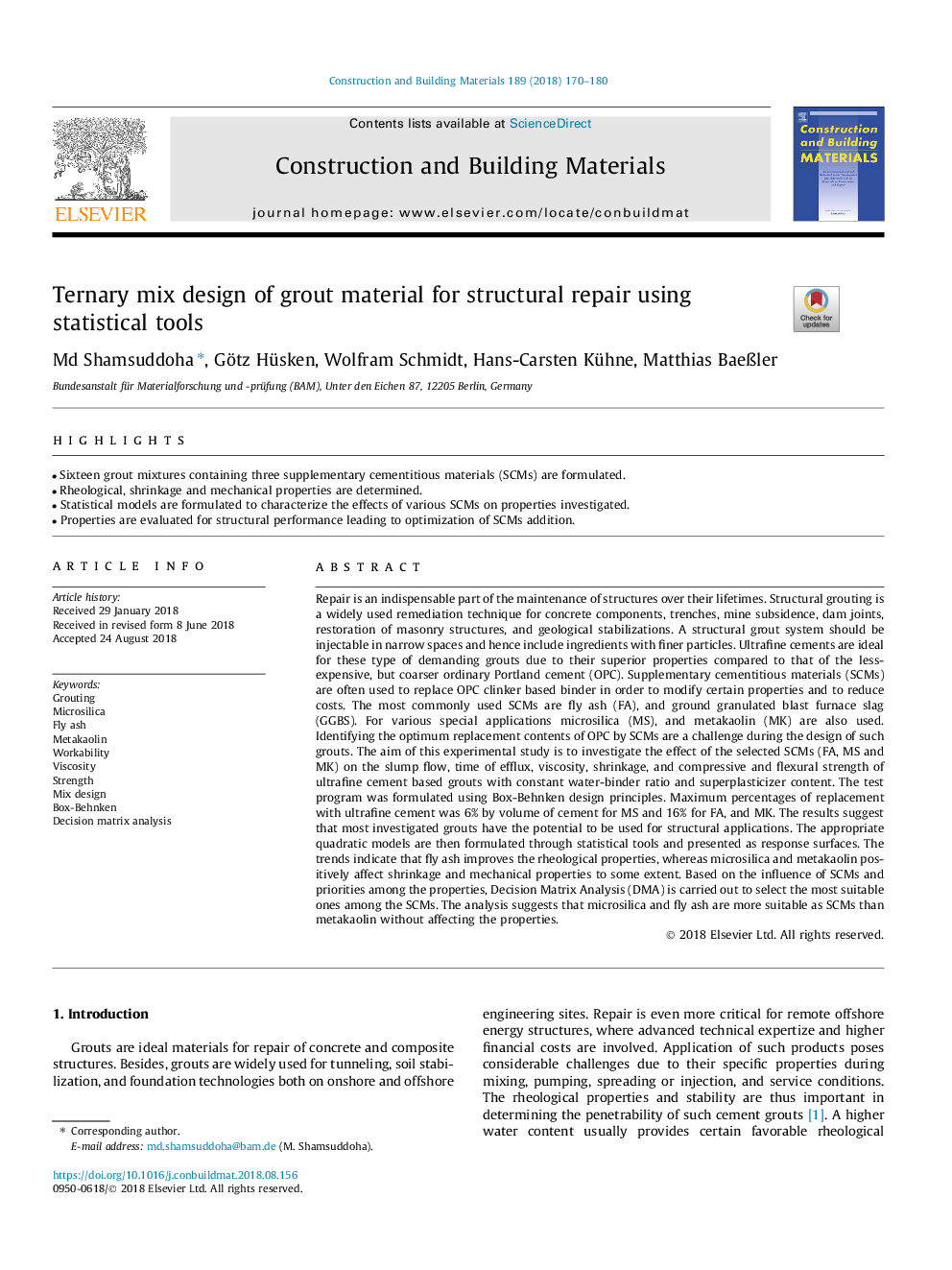| کد مقاله | کد نشریه | سال انتشار | مقاله انگلیسی | نسخه تمام متن |
|---|---|---|---|---|
| 8960006 | 1646368 | 2018 | 11 صفحه PDF | دانلود رایگان |
عنوان انگلیسی مقاله ISI
Ternary mix design of grout material for structural repair using statistical tools
ترجمه فارسی عنوان
ترکیب ترناری مخلوط مواد غلطک برای تعمیر ساختار با استفاده از ابزارهای آماری
دانلود مقاله + سفارش ترجمه
دانلود مقاله ISI انگلیسی
رایگان برای ایرانیان
کلمات کلیدی
موضوعات مرتبط
مهندسی و علوم پایه
سایر رشته های مهندسی
مهندسی عمران و سازه
چکیده انگلیسی
Repair is an indispensable part of the maintenance of structures over their lifetimes. Structural grouting is a widely used remediation technique for concrete components, trenches, mine subsidence, dam joints, restoration of masonry structures, and geological stabilizations. A structural grout system should be injectable in narrow spaces and hence include ingredients with finer particles. Ultrafine cements are ideal for these type of demanding grouts due to their superior properties compared to that of the less-expensive, but coarser ordinary Portland cement (OPC). Supplementary cementitious materials (SCMs) are often used to replace OPC clinker based binder in order to modify certain properties and to reduce costs. The most commonly used SCMs are fly ash (FA), and ground granulated blast furnace slag (GGBS). For various special applications microsilica (MS), and metakaolin (MK) are also used. Identifying the optimum replacement contents of OPC by SCMs are a challenge during the design of such grouts. The aim of this experimental study is to investigate the effect of the selected SCMs (FA, MS and MK) on the slump flow, time of efflux, viscosity, shrinkage, and compressive and flexural strength of ultrafine cement based grouts with constant water-binder ratio and superplasticizer content. The test program was formulated using Box-Behnken design principles. Maximum percentages of replacement with ultrafine cement was 6% by volume of cement for MS and 16% for FA, and MK. The results suggest that most investigated grouts have the potential to be used for structural applications. The appropriate quadratic models are then formulated through statistical tools and presented as response surfaces. The trends indicate that fly ash improves the rheological properties, whereas microsilica and metakaolin positively affect shrinkage and mechanical properties to some extent. Based on the influence of SCMs and priorities among the properties, Decision Matrix Analysis (DMA) is carried out to select the most suitable ones among the SCMs. The analysis suggests that microsilica and fly ash are more suitable as SCMs than metakaolin without affecting the properties.
ناشر
Database: Elsevier - ScienceDirect (ساینس دایرکت)
Journal: Construction and Building Materials - Volume 189, 20 November 2018, Pages 170-180
Journal: Construction and Building Materials - Volume 189, 20 November 2018, Pages 170-180
نویسندگان
Md Shamsuddoha, Götz Hüsken, Wolfram Schmidt, Hans-Carsten Kühne, Matthias BaeÃler,
